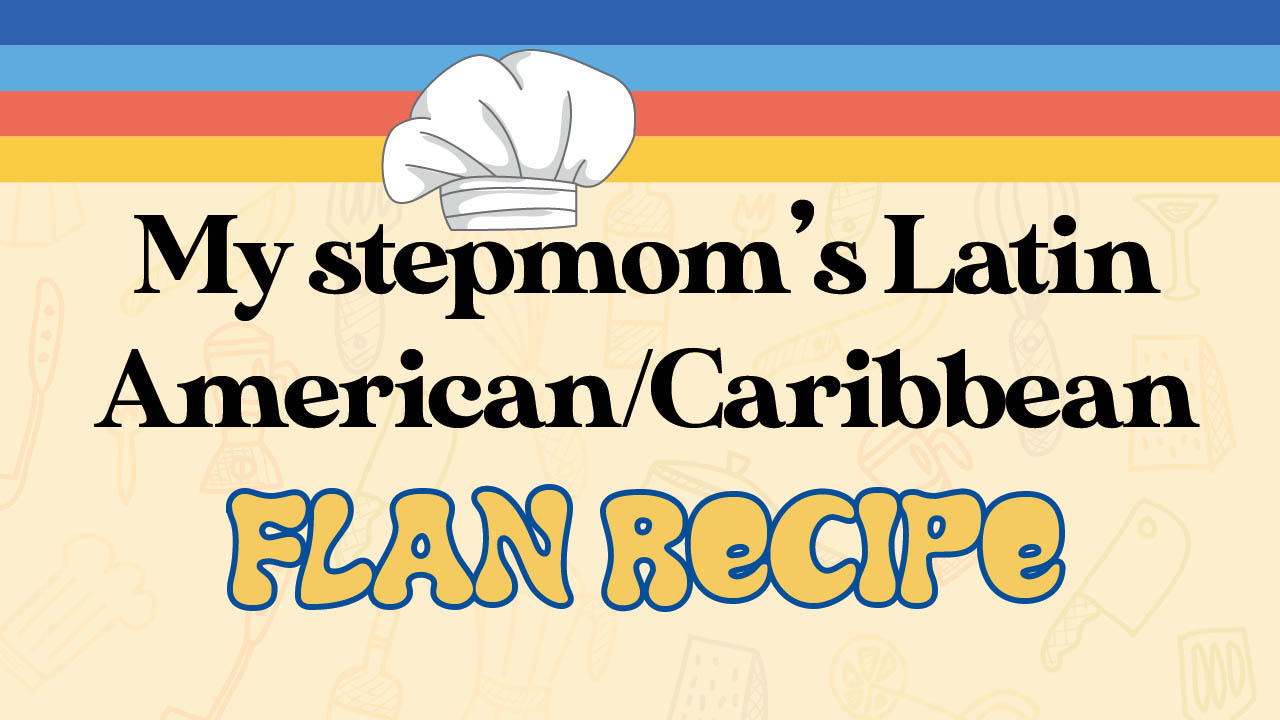My stepmom’s Latin American/Caribbean flan recipe
 CREDIT: FSU PUBLICATIONS AND COMMUNICATIONS DEPARTMENT
CREDIT: FSU PUBLICATIONS AND COMMUNICATIONS DEPARTMENTOne of the easiest ways of exploring the diversity of other cultures is through their foods.
If you’ve read some of my articles before, I’m sure you know by now that I’m from the sweetest island in the Caribbean, Barbados. As you can imagine, the flavours behind almost every meal in the Caribbean have some form of historical meaning to them.
The recipe below is extremely special because my stepmom, who moved from her home country of Cuba, brought this to our Caribbean household in 2014. If you’ve done your research on flan before, you’ll see that it’s considered a Latin American and Caribbean delicacy. According to my stepmom, Vilmaris (Vil) King, flan was always on the dining table after every dinner in Cuba!
Ingredients:
- 1 tin condensed milk (sweetened or unsweetened)
- ½ tsp vanilla essence
- 1 cup milk
- 3-5 eggs
- 1 cup sugar (white or brown)
- ½ cup water
The first step in making flan, is to create the mixture which is a combination of the condensed milk, vanilla essence, milk, and eggs. Vil likes to mix this in a mixing device to get the perfect consistency.
Once the mixture has been created, it’s time to create the caramel. This is done by heating the sugar and water on the stove until it starts to boil, creating bubbles in the mixture.
Remember, it’s important to stir the caramel on the stove so it won’t burn.
After the caramel reaches a light brown color, pour it into the dish that you plan on making the flan in. Vil has a specific flan dish that has a cover on the top to assist in making the dessert. However, you can use any dish you want, as long as it can fit in a deep pot or pressure cooker.
When the caramel has been placed into the dish, pour the mixture that contains the condensed milk over the caramel.
As I mentioned, Vil has a dish that covers the top, so she doesn’t need to use foil to cover hers. She indicated that sometimes in Cuba, they would use a thick cloth as a cover and would tie it to the dish.
After this step is completed, you want to put your dish in either a deep pot or a pressure cooker and place hot water around the dish so that it’s submerged half-way.
Note: The water should not cover the dish completely and water shouldn’t be able to get inside.
If you’ve used a pot, it’s important to cover the pot and leave the water boiling for one hour. If you’ve used a pressure cooker, it’s also important to remember to cover it, and once it begins to pressure, leave it for 15-20 minutes and then take it off the heat.
When the time has passed, set things aside to cool until you can take the dish out of your pot or pressure cooker.
Next, place the dish into a cold-water bath to help it cool faster. You can do this by placing the dish in a Pyrex with cold water and ice. There are also other ways you can speed up the cooling process. Vil likes to put the flan dish in the freezer and checks on it to make sure it doesn’t freeze! However, If you have the time and don’t want to rush, you could leave it in the fridge overnight.
Once the flan has completely cooled, remove the foil or cloth, and run a knife around the edges.
Now for the fun part! Place a plate on top of the dish and flip it. What you should be left with is a beautiful caramel topping with a cream-coloured jello-like dessert underneath.
While Vil is used to having this served after every dinner, it can be enjoyed at any time of the day!
After you taste this heavenly dessert, I have no doubt that you will begin making this often in your household and it will hopefully be the start of a new tradition.















